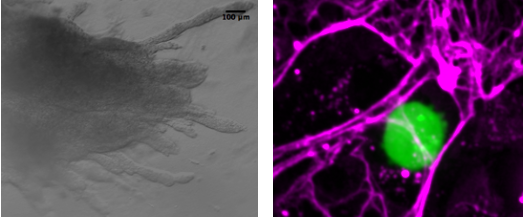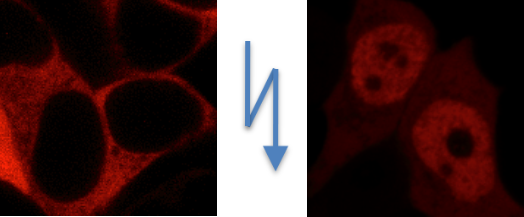Mechanobiology
Gain and loss of shape is strongly linked to biological function and disease. Shape of cell collectives is modulated by the mechanical properties of the surrounding tissue. We study this influence using techniques to control the mechanical properties of the extracellular matrix as well as techniques that allow for spatio-temporal control of the proteins involved in mechanosensing and -transduction in the cell. An understanding of the mutual influence of mechanical properties of the extracellular matrix and behavior of cell collectives will serve to gain a better understanding of diseases as well as contribute to the development of organoids with defined shape for drug research and regenerative medicine.

Optogenetics
Protein translocation into the nucleus is used by cells for control of a manifold of signaling pathways. Thus, control over nuclear translocation of proteins allows for manipulation of many cellular processes and also cell behavior. With our collaborators we have developed a tool to optically control nuclear translocation of proteins. We are now using this tool to manipulate cellular processes in order to understand their role in development and disease.

Nanoparticles for Drug Delivery
Nanoparticles are emerging as valuable tools for biomedical applications. They can be tailored to deliver drugs or act as a drug themselves at a target region under control of certain stimuli such as pH. We investigate the effect of such nanoparticles on cells, their mode of action and their potential for therapeutic applications. Particularly, we focus on the delivery of proteins and nucleic acids, as well as the development of nanoparticles with inherent therapeutic effects that don’t need encapsulation of additional drugs.
